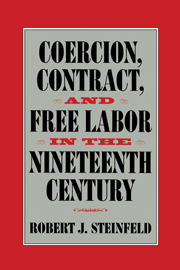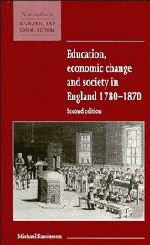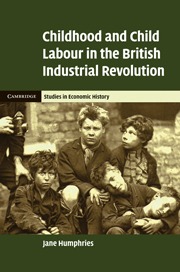Coercion, Contract, and Free Labor in the Nineteenth Century
This book presents a fundamental reassessment of the nature of wage labor in the nineteenth century, focusing on the use of sanctions to enforce wage labor agreements. Professor Steinfeld argues that wage workers were not employees at will but were often bound to their employment by enforceable labor agreements, which employers used whenever available to manage their labor costs and supply. Modern free wage labor only came into being late in the nineteenth century, as a result of reform legislation that restricted the contract remedies employers could legally use.
- Reassesses the nature of nineteenth-century wage labor, focusing on the common use of penal sanctions to enforce wage labor agreements
- Raises serious questions about the conventional distinction between free and coerced labor
- Reexamines the history of American fundamental law governing involuntary servitude and peonage
Reviews & endorsements
"...the book is a major accomplishment...It is an important work that belongs in the library of anyone studying labor history, the economic history of the nineteenth century, or modern employment and labor law in either the United States or the United Kingdom." Industrial and Labor Relations Review
"...ambitious...detailed and impressive..." Law and History Review
"[There is] much concrete information and much food for philosophical thought in this book, one that both requires and rewards concentrated reading effort." Journal of American History
"Steinfeld does an admirable job with I^Coercion, Contract and Free Labor. It will enrich those interested in labor relations and stimulate further research." EH.NET
"Readers interested in grasping the development of labour law and the ideas and economies in which it was entwined will find this volume of great use...his work offers an important analysis of 19th century labour law." Labour
"It offers particularly effective demonstration of how legal frameworks, by definig such basic matters as contract and property, have historically constitued--as well as merely regulated--labor markets." Journal of the Early Republic
Product details
February 2001Hardback
9780521773607
342 pages
229 × 152 × 22 mm
0.67kg
1 b/w illus. 2 maps 3 tables
Available
Table of Contents
- Introduction: free wage labor in the history of the West
- Part I. American Contract Labor and English Wage Labor: The Use of Pecuniary and Nonpecuniary Pressure:
- 1. 'Free' contract labor in the United States: an anti-essentialist view of labor types I
- 2. 'Unfree' wage labor in nineteenth-century England: an anti-essentialist view of labor types II
- 3. Explaining the legal content of English wage labor
- 4. Struggles over the rules: the Common Law Courts, parliament, the people, and the master and servant acts
- 5. Struggles under the rules: strategic behavior and historical change in legal context
- 6. Struggles to change the rules
- 7. Freedom of contract and freedom of person
- Part II. 'Free' and 'Unfree' Labor in the United States:
- 8. 'Involuntary servitude' in American fundamental law
- 9. Labor contract enforcement in the American north
- Conclusion.






